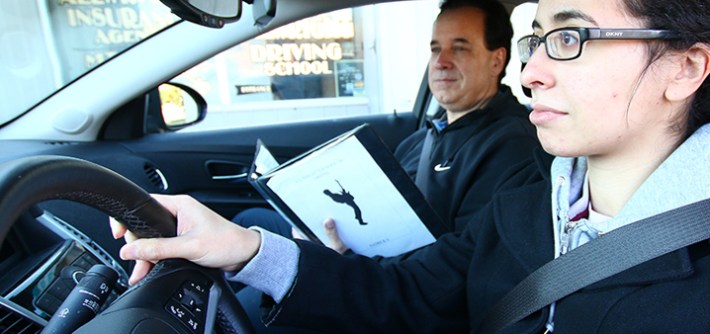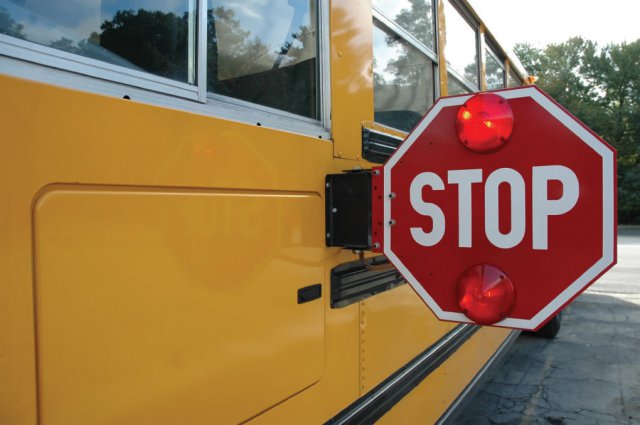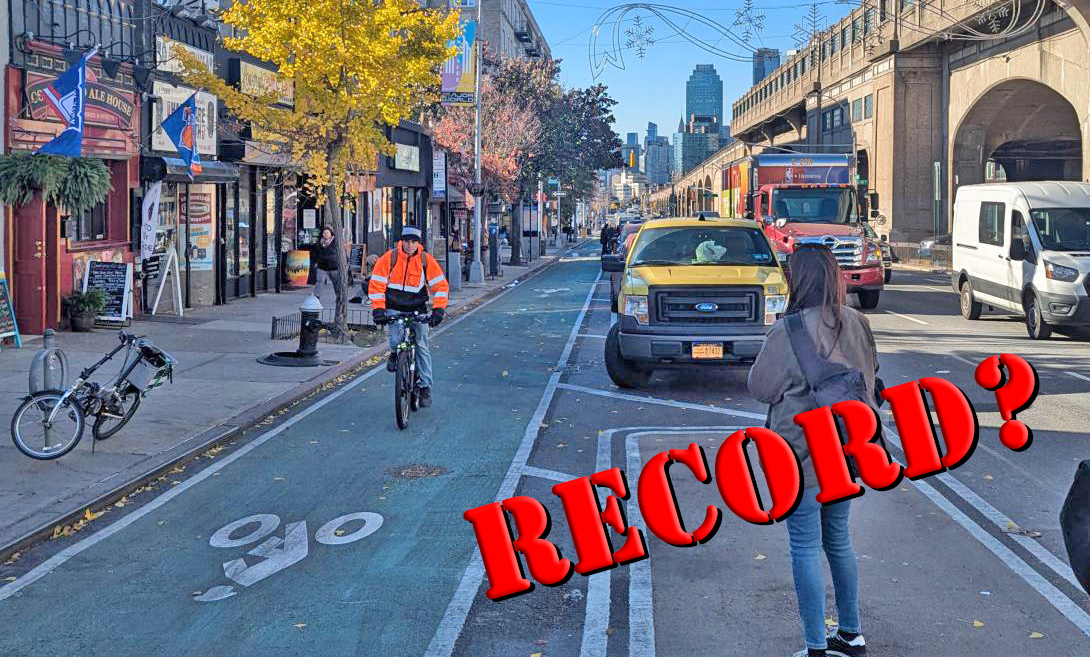It's enough to give you road rage: State lawmakers are making it easier for bad drivers to get licenses by allowing student drivers to take a questionable online safety course rather than the previously mandated five-hour, instructor-taught classroom session.
Certified driving school instructors — who may be the only trained educator that students will encounter before getting their license — say that the bill approved by the state legislature earlier this summer would lower New York's already minimal standards for driver training, unleashing untold numbers of improperly trained newbies onto the roads.
"If that course goes online, it won't be taught as well, plain and simple," said Patrick Sardella, a driving instructor for four decades, most recently at Allwright's School of Driving in upstate Rochester. "With an online course, no one will even know if you were sober or paying attention when you clicked the buttons. Or maybe you got a friend to do it for you. In the classroom setting, we talk directly to people about driving."
The bill, S3965 in the Senate and A5874 in the Assembly, would allow student drivers to take an online version of the state's five-hour classroom instruction course currently mandated by state law before a would-be driver can sign up for a road test. The bill passed overwhelmingly in both houses (in the Senate, it was unanimous), though it is unclear if lawmakers understood the full implication of the bill, advocates say. Nonetheless, it awaits Gov. Cuomo's expected signature.
New York State has notoriously lenient rules for getting a driver's license, consisting of just four steps:
- Take an easy written test to get a learner's permit.
- Drive for 50 hours with any adult who has a driver's license. The adult need not have any specialized training.
- Take the five-hour course (currently in-classroom only).
- Pass the road test.
Some states, of course, have even easier requirements, but many throw up more hurdles. New York, unlike several other states, does not require would-be drivers to get formal driving instruction by a certified teacher. The only requirement is a note from a would-be driver's parent testifying that the student driver operated a car for 50 hours, with 15 of those hours occurring after sunset. The official-sounding, but ultimately toothless, Certification of Supervised Driving does not even need to be notarized. It is unclear how many would-be drivers actually get behind the wheel for 50 hours.

Only 16 states allow the classroom certification course to be completed online. In New York, the goal of State Sen. Tim Kennedy's bill to legalize online instruction is to simply make it easier for people to get past that third step.
"In today's ever evolving technological environment, there is a steady and consistent movement toward on-line offerings of goods and services," the bill's cover memo explains. "Allowing these courses to be done online would provide flexibility and efficiency to this step of the licensing process. ... While a classroom setting might be the preferred (or only) option for some individuals, on-line access will provide a great convenience to many."
The bill also asserts that state DMV "has been providing ... services to the public through internet based forums with great success."
Great success, of course, is a subjective term — unless the state has statistical evidence to back up such a claim. Indeed, the only justification for putting the course online would be if there was definitive proof that online courses do a better job than in-person classes.
As you might have guessed, there is no such proof. In fact, there's the opposite of proof.
As many drivers know, there is an existing 20-plus-year-old program called the "Point and Insurance Reduction Program" that allows drivers to lower their insurance rates or reduce the number of points on their driver's licenses if they sit through a supervised, in-person class taught by a certified teacher.
A decade ago, state lawmakers created an online version of that defensive driving, calling it the "Internet Point and Insurance Reduction Program." Instead of forcing bad drivers to take instruction face to face with a certified teacher, those same scofflaw New York State residents could simply click buttons on a computer for a few hours.
"Our 100 percent online format is straightforward and entertaining," says one online ad for the course. "There is no final exam." (Full disclosure: This reporter has taken the online course several times and can confirm that only the bit about there being no final exam is accurate.)
If you think it's odd that the state would consider an "entertaining" and exam-free online course sufficient, you're onto something. Before the legislature authorized the internet-based point reduction course, it actually had declared them to be insufficient.
"The regulations implementing the classroom PIRP program called for a robust, in-classroom experience," said lawyer Benjamin Neidl, who represented a driving school that is fighting the latest online course authorization. "In order to minimize the likelihood of distraction (and preserve the effectiveness of the courses), the DMV regulations specifically forbade PIRP instruction 'in any non-traditional classroom location (such as a house ... [or] personal residence).'"
Thankfully, when it created the online version of the point-reduction program, the state legislature specifically required the DMV to assess whether the online course was, indeed, showing any success.
The problem? No evidence exists that there's any success, said Neidl, who used the Freedom of Information Law to demand evidence from the DMV that the online course were effective. He was looking specifically for evidence that drivers with points on their licenses became measurably less likely to drive recklessly after taking the course.
The DMV "asserts that I-PIRP 'has proven to be as effective as the classroom course' [but] includes no scientific backup (or any backup) to that effect," Neidl wrote to his clients in a report made available to Streetsblog.
Mostly, Neidl demanded documents that would show that the DMV was monitoring the online course providers or assessing the effectiveness of the program. Time and time again, the DMV's answer was clear: “After a diligent search, no records exist.”
To Sardella, the absence of proof is proof: Online courses are not as effective as what he does in the classroom.
"In the classroom, we have people who have gotten DUI and want to get their license back, and they tell the kids their experience," Sardella said, recounting one repentant drunk driver who scared teenage drivers straight. "He told the kids about how he hit someone when he was drunk and by the end of the story, everyone in the class was crying. Their eyes were as big as those big chocolate chip cookies.
"You can't get that on the computer," Sardella concluded.
Kennedy, the Buffalo senator pushing the online driving course bill, declined to be interviewed by Streetsblog. But he issued the following statement:
As New York evolves and technological advancements pave new paths forward, we need to ensure that our transportation systems and processes progress as well. Through this bill, we're ensuring that pre-licensing courses are more accessible to all New Yorkers by offering an online component.
He added that some "working class New Yorkers" find it difficult to take a class that requires in-person attendance "for employment, geographic, or personal reasons."
Sardella called the "convenience" argument "absurd." He added that most of the states that allow online courses "are warm states where they don't have to deal with adverse weather, or are not heavily populated, like Nebraska or Kansas." He also pointed out that up to one-quarter of a driving school's income comes from the in-person five-hour course — so putting the course online could put some schools out of business and have the residual effect of reducing driving instruction in the state.
But his largest — and probably the most insightful — problem with the online course is the simple fact that it can't change someone with a bad attitude. And most teenagers, even really nice ones, believe they know things that they simply cannot know due to lack of experience or education.
"This online course will not make safer drivers out of young people who have negative attitudes," he said. "The guy who has the negative attitude is not going to change his attitude in front of a computer. But in the classroom, that guy comes in and we talk about the law or a driving scenario and he says something wrong and I say, 'You're not right.' And then the entire class gets involved, and suddenly he learns from his peers that his very strange idea about the law is actually not right. That's his peers — not a computer."
The Department of Motor Vehicles does not respond to requests for comment on pending legislation.






